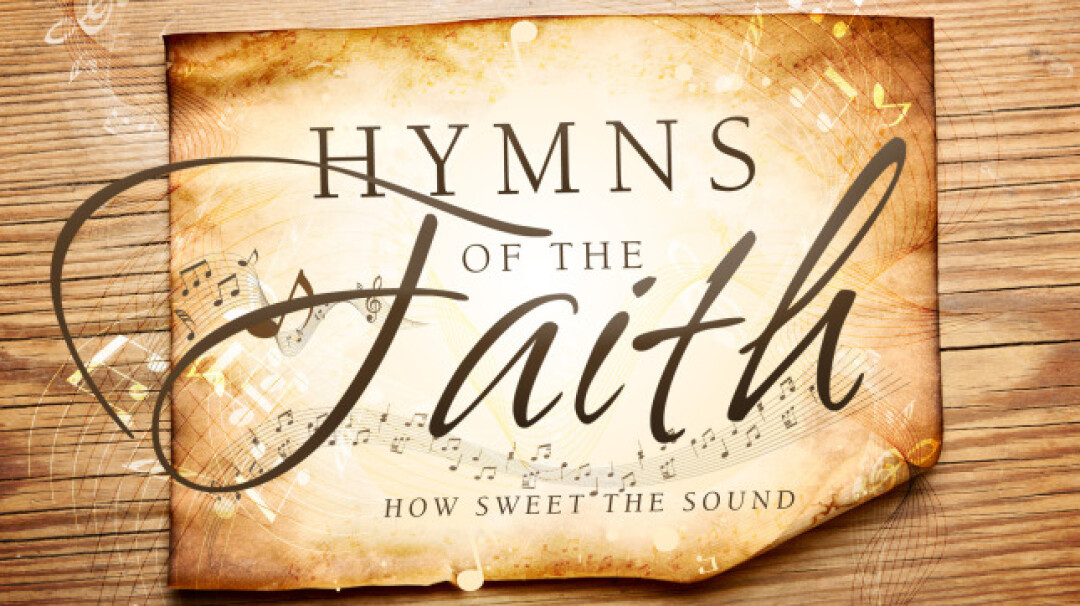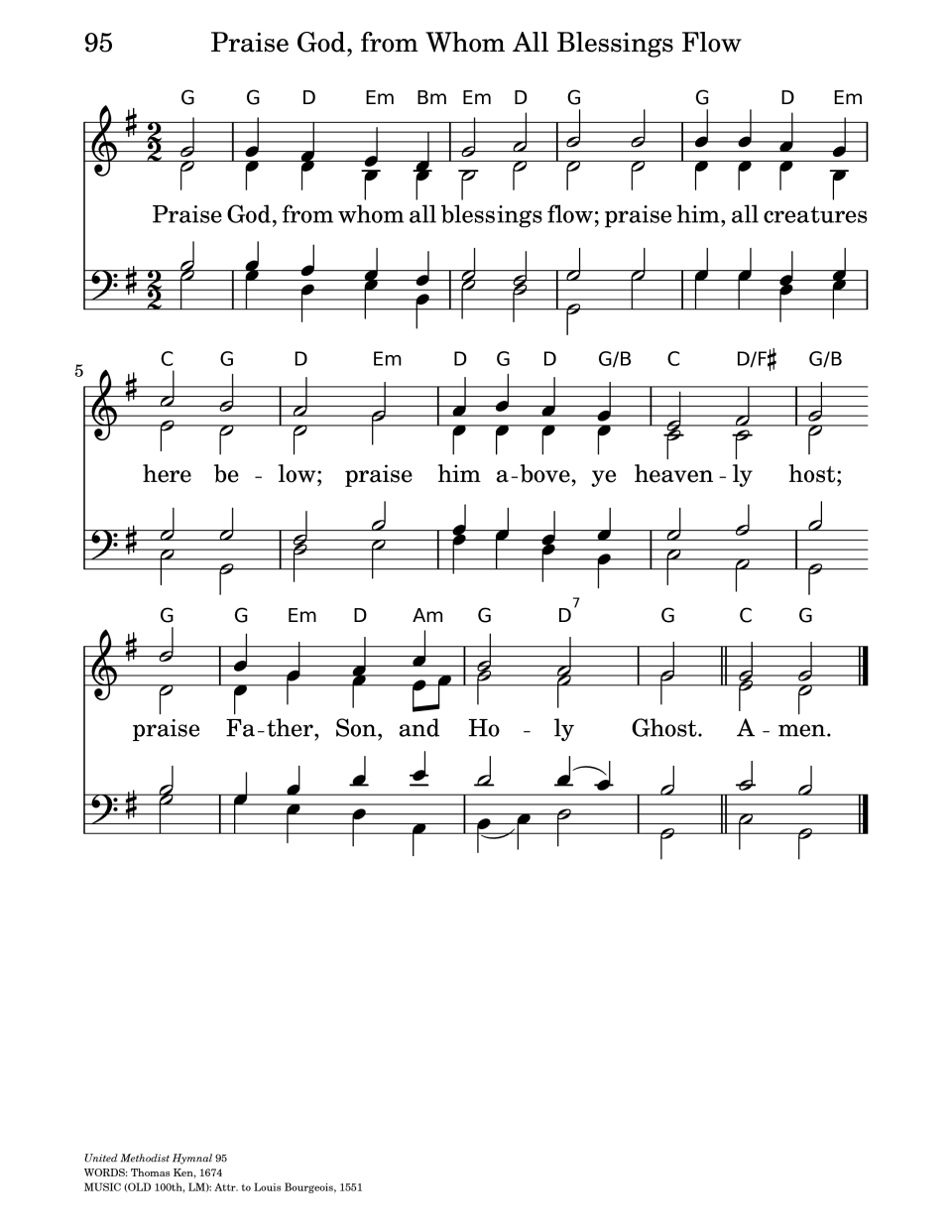

A New View of the Doxology
Every Sunday, we sing the Doxology after the offering at Pender.
On September 8, 2024, Abe Garver wrote: "Reporting back to share the most incredible 60 seconds of the service, from the cellist’s chair.
If you’ve never experienced the sight of trees swaying in the sun and wind as the Pender United Methodist Church congregation lifts its voices in praise during the Doxology (the moment after the offering is collected) you really must. There’s something uniquely special about that moment of harmony with nature—a beautiful reminder of God’s presence in all things.
As if on cue, watch as my cello turns 10 seconds in, almost magically aligning with the choir and everyone gazing out the window.
It was mind-blowing to experience it from the choir’s perspective. They are literally turned around, facing the window.
What a powerful way to start the day and the week—praising God, from whom all blessings flow.
And to tie it to Scripture: “Every good and perfect gift is from above, coming down from the Father of the heavenly lights, who does not change like shifting shadows.” (James 1:17)
Kay Short, today was in honor of you. When I looked out into the congregation I saw my dear friend Carol-Anne (pictured in comments) who is the closest woman to you I’ve ever met. Her husband Andy shared her lab results came back favorably. I had the honor of serving her lunch, pulling out the chair for her at the table as she is weary from all the treatments, and it was incredible to have you join."
The choir and congregation sang the Doxology accompanied by Abe Garver on cello, AJ Rios on percussion, and Heidi Jacobs on piano.
Pender's current Doxology is "Praise God, from Whom All Blessings Flow".
On May 28, 2023, Pender Pianist, Heidi Jacobs played a prelude which incorporated the Doxology into a medley of hymns.
In general usage, the Doxology is a short statement of praise, glory, and thanksgiving to God. It is often a short hymn designed to be sung by the worshiping congregation. Pender sings it to give thanks after the offering.
Chuck Knows Church -- Doxology.
Chuck sings! Kinda. Bet you can't guess the name of the most played piece of music in Protestant churches each Sunday? You looked at the title of this episode, didn't you?
Chuck sings and explains on this his show!
“Praise God, from Whom All Blessings Flow”
by Thomas Ken
The United Methodist Hymnal, 95
Praise God, from whom all blessings flow;
Praise him, all creatures here below;
Praise him above, ye heav’nly host;
Praise Father, Son, and Holy Ghost.
Born in Hertfordshire, Bishop Thomas Ken (1637–1711) was orphaned as a child and raised by his sister Anna and her husband Izaak Walton. They enrolled him in the all-boys school at Winchester College (1651–1656). After his education there, he attended Hart Hall, Oxford, and New College, Oxford (B.A., 1661, M.A., 1664).
Ken was ordained as an Anglican priest in 1662, serving as rector to several parishes and as a chaplain to Princess Mary of Orange (1679–80), King Charles II (1683), and the Tangier Expedition (1683–84). In 1685, he was appointed Bishop of Bath and Wells. During the reign of King James II, he was imprisoned in the Tower of London for refusing to sign the Declaration of Indulgence (1687), a decree designed to promote the king’s Catholic faith. Ken was acquitted of the charge. When, however, King William III ascended to the throne, Ken refused to swear loyalty to him and resigned his office, living the rest of his life at the home of his friend, Lord Weymouth, at Longleat, Wilshire (Doyle, Canterbury Dictionary, n.p.).
The original date of composition by Ken for the text of “Praise God from Whom All Blessings Flow” is unknown. The first mention of the hymn is in 1674 as the presumed final stanza of two longer hymns: “Awake, My Soul and with the Sun” and “Glory to Thee, My God, this Night.” These two hymns were referenced along with a third as Morning, Evening and Midnight Hymns in a later edition of a pamphlet written for his students titled A Manual of Prayers for the Use of the Scholars of Winchester College (1695). The following directive is from the first edition:
. . . be sure to sing the Morning and Evening Hymn in your chamber devoutly, remembering that the Psalmist, upon happy experience, assures you that it is a good thing to tell of the loving kindness of the Lord early in the morning and of his truth in the night season (Ken, 1675, n.p.).
This directive is most often interpreted to mean that the hymns were meant for private devotion, not the gathered assembly, and yet these four lines, often referred to as The Lesser Doxology, have “been sung more often than any other lines ever written” (Gealy, 1993, 200). The hymn texts were published later as an appendix in his 1695 pamphlet as “revised” versions.
Much of the beauty of these four lines lies in its reflection of the joyous outbursts of the psalms. Here we see both the “host” of heaven and the “creatures here below” of earth praising God as in Psalm 96:11-12a and the final jubilant line of Psalm 150:6:
Let the heavens be glad, and let the earth rejoice;
let the sea roar, and all that fills it;
let the field exult, and everything in it. (Psalm 96: 11-12a, NRSV)
Let everything that breathes praise the Lord!
Praise the Lord! (Psalm 150:6, NRSV)
Commonly called “The Doxology,” Ken’s acclamation of praise is actually one of many doxological declarations that appear in many hymns, often in final stanza. See, for example, the last stanzas of the fourth-century hymn “Of the Father’s Love Begotten,” William Draper’s versification (c. 1919) of a thirteenth-century poem by Francis of Assisi, “All Creatures of Our God and King,” and Catherine Winkworth’s translation (1858) of Lutheran pastor Martin Rinkart’s “Now Thank We All Our God” (1647). Though less common now, the pattern for many mainline Protestant congregations has been to sing another doxological acclamation, the “Gloria Patri,” earlier in a worship service, and Ken’s stanza at the time of the offertory. Of note is the cosmic character of Ken’s praise—“all creatures here below” and “above ye heavenly hosts”—calling on the entire cosmos to praise God.
The Trinitarian structure of Ken’s hymn has also led to its common liturgical use. The first line describes the person of God the Father as the source of all blessings (Ephesians 1:3; 2 Corinthians 1:3). The second line, though, speaks to God the Spirit through whom all creatures praise God (Psalm 104:24-30; 1 Corinthians 2:10-13). The third line points to God the Son, who is begotten of the Father, firstborn of heaven and superior to angels and the heavenly host (Hebrews 1:4). The fourth line summarizes the stanza and all of praise in general, since all praise is directed toward God, Father, Son, and Holy Spirit.
The United Methodist Hymnal pairs this text with the hymn tune OLD 100th, which is attributed to John Calvin’s composer, Louis Bourgeois (c. 1510–1559). The first two lines of Ken’s text were later adapted with additional inclusive words by United Methodist pastor Gilbert H. Vieira (b. 1926) to be sung with LASST UNS ERFREUEN from Ausserlesene Catholische, Kirchengesänge (1623), harmonized by Ralph Vaughan Williams. Pastor Vieira’s use of inclusive language reflects his continuing strong stands for inclusive and carefully chosen language (see Vieira, 2020, n.p.).
The hymn tune MORNING HYMN was composed by François Hippolyte Barthélémon (1741–1808) for the text of “Awake, My Soul, and With the Sun.” The appropriateness of the tune works well for this final stanza, where the words of the second phrase, “Praise him, all creatures here below,” are sung by descending stepwise through an entire scale. The third phrase, “Praise him above, ye heav’nly host,” is sung through a similar ascension that returns to the highest note of the tune in the final stanza, acknowledging the Trinitarian nature of God. Sheila Doyle comments on the hymn text saying, “The language is simple and precise, and the opening images of light and rising up, appropriate to morning, pervade the hymn and convey a powerful sense of renewal and aspiration” (Doyle, “Awake, My Soul,” n.p.).
SOURCES:
Sheila Doyle, “Awake, My Soul, and with the Sun,” The Canterbury Dictionary of Hymnology. Canterbury Press, https://hymnology.hymnsam.co.uk/a/awake,-my-soul,-and-with-the-sun (accessed September 27, 2020).
_____, “Thomas Ken,” The Canterbury Dictionary of Hymnology. Canterbury Press, http://www.hymnology.co.uk/t/thomas-ken (accessed September 27, 2020).
Fred D. Gealy, Research Files for the 1970 Companion to the Hymnal [1966] quoted in Young, Carlton R. Companion to the United Methodist Hymnal (Nashville, TN: Abingdon Press, 1993), 200.
Thomas Ken, A Manual of Prayers for the Use of the Scholars of Winchester College
(London: Printed for John Martyn, 1675), http://anglicanhistory.org/ken/manual.html (accessed September 27, 2020).
Gilbert H. Viera, “Let’s Watch Our Language,” United Methodist Insight (February 24, 2020), https://um-insight.net/perspectives/let-s-watch-our-language (accessed September 27, 2020).
From https://www.umcdiscipleship.org/articles/history-of-hymns-praise-god-from-whom-all-blessings-flow



2 Comments
So, what do you think?
This presentation is an excellent synopsis of the work of Thomas Ken with supporting scripture references.
This article is a refreshing clear, concise, and convincing writing.
It is very well done.
By the way there are many verses to this well known hymn and poem of praise which I consider to be a summary of the entire Bible.